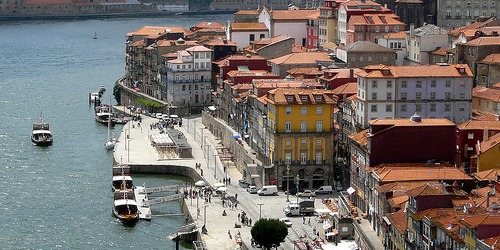 Porto is best known as the center of Portugal’s port wine production, and that’s probably what most visitors come for. Yet this charming city on the Douro river, with its colorful houses stacked seemingly on top of one another as the climb the city’s steep hills, is worth a visit even if you aren’t a wine-lover. For a quick taste, plan on 2-3 days, plus another if you plan to take a day trip to the nearby Douro Valley.
Porto is best known as the center of Portugal’s port wine production, and that’s probably what most visitors come for. Yet this charming city on the Douro river, with its colorful houses stacked seemingly on top of one another as the climb the city’s steep hills, is worth a visit even if you aren’t a wine-lover. For a quick taste, plan on 2-3 days, plus another if you plan to take a day trip to the nearby Douro Valley.
Museums and sightseeing
Start in the Ribeira, the riverfront of Porto, with its sidewalk cafes and plenty of tourists. Head up into the city center to see the Centro Português de Fotografia (Portuguese Photography Museum), the Fundação de Serralves modern art museum, and the Casa da Música (House of Music) concert hall. Take a stroll through the Mercado do Bolhão, a traditional market and stop for a photo op (or to shop) at Livraria Lello, one of the most beautiful bookstores in the world.
For art and history buffs, there’s even more to explore. Check out the Casa do Infante, where Prince Henry the Navigator was supposedly born (now a museum), the beautiful Palacio da Bolsa (19th century stock exchange) and the Museu do Carro Eléctrico (transit museum). For one of the best views in the city, climb the 200 stairs of the tower of the Torre dos Clérigos church. Finally, see more of the river on a short cruise of the Douro. These cost only 10 euros and last about an hour.
Port tasting
Even if you aren’t a wine connoisseur, don’t miss a visit to at least one of Porto’s port wine cellars. Some offer tours and tastings, others just offer tastings or wine flights. Some charge a fee while others are free. At at some you’ll be the only person in the room while others will be packed with tourists. Sample from a few different places, or head to the Port Wine Institute to take your pick from hundreds of options in all styles and price ranges.
>> Read more on port tasting in Porto
Day trips
From Porto, you can take a cruise upriver to the Douro Valley. Full day cruises range from 50-100 euros per person and may include lunch or a tour and tasting at one of the valley’s wineries. Visit the town of Guimarães (about 30 minutes away by train) which is a UNESCO World Heritage Site and was chosen as a 2012 Capital of Culture for its many art galleries and museum and lively art and music scenes. Closer to the city, you can visit Foz, a sophisticated seaside village with lots of cafés and restaurants a short bus ride away from Porto.
Dining
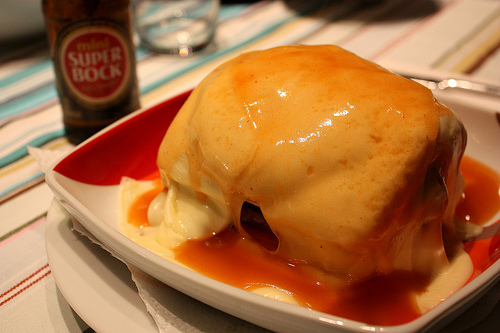 As in Lisbon and the rest of Portugal, cuisine in Porto relies heavily on fresh fish. Try bacalhau (cod) grilled, broiled, poached, or in a soup, or opt for other popular fish like grilled sardines, horse mackerel, cuttlefish, grouper, turbot, or mullet. Portuguese food also uses a lot of pork and sausage. Try the suckling pig or sausages like “chouriço” or “linguiça.” Alheira, a smoked sausage made of pork, poultry meat, wheat bread and olive oil, seasoned with salt, garlic and paprika, can also be found on menus all over Porto. For a splurge meal and a modern take on traditional local food, make reservations for the dining room at the beautiful Yeatman Hotel. And if you tire of Portuguese food, check out Sitar (one of a handful of restaurants offering international food) for excellent Indian food.
As in Lisbon and the rest of Portugal, cuisine in Porto relies heavily on fresh fish. Try bacalhau (cod) grilled, broiled, poached, or in a soup, or opt for other popular fish like grilled sardines, horse mackerel, cuttlefish, grouper, turbot, or mullet. Portuguese food also uses a lot of pork and sausage. Try the suckling pig or sausages like “chouriço” or “linguiça.” Alheira, a smoked sausage made of pork, poultry meat, wheat bread and olive oil, seasoned with salt, garlic and paprika, can also be found on menus all over Porto. For a splurge meal and a modern take on traditional local food, make reservations for the dining room at the beautiful Yeatman Hotel. And if you tire of Portuguese food, check out Sitar (one of a handful of restaurants offering international food) for excellent Indian food.
If you try no other Portuguese food though, make sure you sample a Francesinha (or Little Frenchie). The slightly monstrous-looking Francesinha is the artery-clogging Portuguese version of the croque monsieur. A sandwich of wet-cured ham, linguiça, and steak or roast meat, covered with melted cheese and topped with a thick tomato and beer sauce, it’s served with french fries for 7-11 euros each and can be found all over Porto.
As elsewhere in the country, breakfast is a very light meal – coffee and bread or pastry – usually had in a cafe. Lunch may be served between noon and 3pm and dinner is generally between 8 and 11pm. When you sit to eat, a plate of sausage, cheese or bread may be brought; just be aware that this is not free and you will be charged for what you eat.
Photos by: b00nj, iNolsonRocha
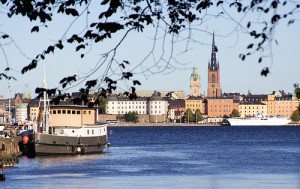 Stockholm is a lively, cosmopolite and beautiful European city. Sweden’s capital sits on 14 islands, connected by 500 bridges and offers an interesting Old Town, along with many parks and gardens. However, Sweden is not exactly a very cheap place to visit, and, as a result, tourists often avoid planning a vacation here.
Stockholm is a lively, cosmopolite and beautiful European city. Sweden’s capital sits on 14 islands, connected by 500 bridges and offers an interesting Old Town, along with many parks and gardens. However, Sweden is not exactly a very cheap place to visit, and, as a result, tourists often avoid planning a vacation here.  Porto is best known as the center of Portugal’s port wine production, and that’s probably what most visitors come for. Yet this charming city on the Douro river, with its colorful houses stacked seemingly on top of one another as the climb the city’s steep hills, is worth a visit even if you aren’t a wine-lover. For a quick taste, plan on 2-3 days, plus another if you plan to take a day trip to the nearby Douro Valley.
Porto is best known as the center of Portugal’s port wine production, and that’s probably what most visitors come for. Yet this charming city on the Douro river, with its colorful houses stacked seemingly on top of one another as the climb the city’s steep hills, is worth a visit even if you aren’t a wine-lover. For a quick taste, plan on 2-3 days, plus another if you plan to take a day trip to the nearby Douro Valley. As in Lisbon and the rest of Portugal, cuisine in Porto relies heavily on fresh fish. Try bacalhau (cod) grilled, broiled, poached, or in a soup, or opt for other popular fish like grilled sardines, horse mackerel, cuttlefish, grouper, turbot, or mullet. Portuguese food also uses a lot of pork and sausage. Try the suckling pig or sausages like “chouriço” or “linguiça.” Alheira, a smoked sausage made of pork, poultry meat, wheat bread and olive oil, seasoned with salt, garlic and paprika, can also be found on menus all over Porto. For a splurge meal and a modern take on traditional local food, make reservations for the dining room at the beautiful Yeatman Hotel. And if you tire of Portuguese food, check out Sitar (one of a handful of restaurants offering international food) for excellent Indian food.
As in Lisbon and the rest of Portugal, cuisine in Porto relies heavily on fresh fish. Try bacalhau (cod) grilled, broiled, poached, or in a soup, or opt for other popular fish like grilled sardines, horse mackerel, cuttlefish, grouper, turbot, or mullet. Portuguese food also uses a lot of pork and sausage. Try the suckling pig or sausages like “chouriço” or “linguiça.” Alheira, a smoked sausage made of pork, poultry meat, wheat bread and olive oil, seasoned with salt, garlic and paprika, can also be found on menus all over Porto. For a splurge meal and a modern take on traditional local food, make reservations for the dining room at the beautiful Yeatman Hotel. And if you tire of Portuguese food, check out Sitar (one of a handful of restaurants offering international food) for excellent Indian food.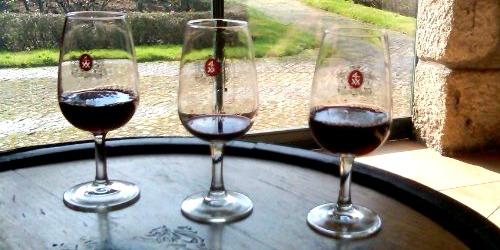 Porto (or Oporto) is the home of port wine. In the early 1700′s England was at war with France and so the people of England (longing for the delicious wine of France) searched for an alternative. They discovered the wines of Portugal, but quickly realized that the wine was spoiling before it made the long trip from Portugal to England. So the clever Brits devised a method of fortifying the wine to increase its longevity.
Porto (or Oporto) is the home of port wine. In the early 1700′s England was at war with France and so the people of England (longing for the delicious wine of France) searched for an alternative. They discovered the wines of Portugal, but quickly realized that the wine was spoiling before it made the long trip from Portugal to England. So the clever Brits devised a method of fortifying the wine to increase its longevity. Some, like Croft, Wiese and Krohn, and
Some, like Croft, Wiese and Krohn, and  When we are surrounded by something all the time, it loses its allure – even if it’s something that’s supposed to be enticing. The rest of the world might shriek when they see celebrities walking down the street, but in LA? That would be a lot of shrieking. Angelenos are famously unflappable when it comes to celebrity, and with good reason. But what about when LA residents go on vacation?
When we are surrounded by something all the time, it loses its allure – even if it’s something that’s supposed to be enticing. The rest of the world might shriek when they see celebrities walking down the street, but in LA? That would be a lot of shrieking. Angelenos are famously unflappable when it comes to celebrity, and with good reason. But what about when LA residents go on vacation?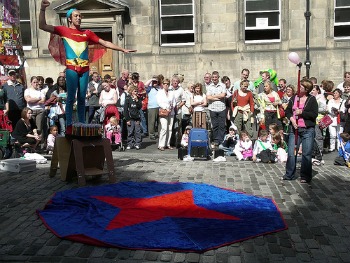 Visiting a city when it’s in the midst of a celebration always makes a trip more interesting – and when the celebration is a world-famous month-long festival of arts, that’s even better. In other words, a visit to Edinburgh during the
Visiting a city when it’s in the midst of a celebration always makes a trip more interesting – and when the celebration is a world-famous month-long festival of arts, that’s even better. In other words, a visit to Edinburgh during the 
 The capital and largest city in Portugal, Lisbon offers plenty to see and do and more then enough activity to fill three to four days (more if you take some day trips). Here are a few ideas for things to do in Lisbon.
The capital and largest city in Portugal, Lisbon offers plenty to see and do and more then enough activity to fill three to four days (more if you take some day trips). Here are a few ideas for things to do in Lisbon. Weekend road trips are a summer staple – jump in the car and head a few hours away for a few days’ change of pace. But if you’re itching to get away for longer, there are plenty of options for extended road trips from Los Angeles. If you have a week or more, consider
Weekend road trips are a summer staple – jump in the car and head a few hours away for a few days’ change of pace. But if you’re itching to get away for longer, there are plenty of options for extended road trips from Los Angeles. If you have a week or more, consider 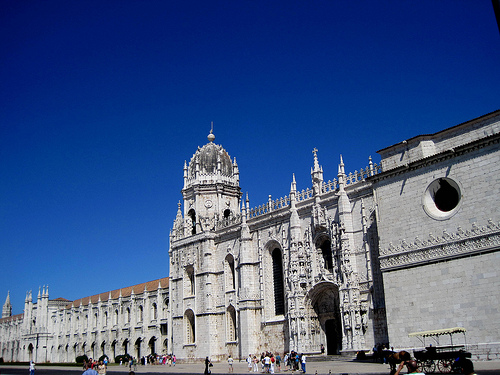 Belém, a parish of Lisbon, sits at the mouth of the Tagus River, six kilometers west of the city center. It’s home to a number of museums and monuments, including the
Belém, a parish of Lisbon, sits at the mouth of the Tagus River, six kilometers west of the city center. It’s home to a number of museums and monuments, including the  While in Belém, don’t miss a stop at the Pastéis de Belém shop just up the street from the Monastery. A pastéis de Belém (or pastéis de nata) is perhaps Portugal’s most famous export. This creamy custard tart can be found all over the country, but many say the best one can still be found at the original shop in Belém. The story goes that the pastéis de natas was created before the 18th century by Catholic nuns at the Jerónimos Monastery. In 1837 the
While in Belém, don’t miss a stop at the Pastéis de Belém shop just up the street from the Monastery. A pastéis de Belém (or pastéis de nata) is perhaps Portugal’s most famous export. This creamy custard tart can be found all over the country, but many say the best one can still be found at the original shop in Belém. The story goes that the pastéis de natas was created before the 18th century by Catholic nuns at the Jerónimos Monastery. In 1837 the